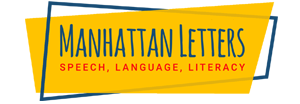This article is from the National Center for Learning Disabilities
If your child struggles with reading issues or dyslexia, you may be unfamiliar with the lingo you re hearing. Here are some key terms to help you take an active role in conversations about your child's reading issues.
-
Decoding
The ability to sound out letters and words. As readers learn which symbols (letters) are associated with certain sounds, they can start to make sense of printed words and translate them into speech. Decoding or sounding out a new word is sometimes called a word attack.
-
Dyslexia
A language-based processing disorder that causes trouble with reading, spelling, writing and sometimes speaking. In schools, dyslexia is generally referred to as a reading disability or as a type of specific learning disability.
-
Fluency
The ability to read sentences correctly and quickly, without having to stop and decode every word. This leap in processing enables readers to focus on the meaning of a passage of text. Fluency is key to reading comprehension.
-
Multisensory structured language education
A common way to teach reading and spelling that engages the senses of sight, sound, motion, and touch. Multisensory approaches emphasize how a letter or word looks and sounds. Instruction includes what your lips and tongue need to do to produce particular sounds and what your arms and hands need to do to write each letter of the alphabet. Multisensory structured language programs also explicitly teach the structure of the English language in terms of grammar and meaning.
-
Orton-Gillingham
In the early 20th century, Dr. Samuel Orton, a neuropsychiatrist and pathologist, and Anna Gillingham, an educator and psychologist, introduced a multisensory structured approach to teaching people with dyslexia. It's the foundation for many programs used today.
-
Phoneme
The smallest units of sound are used to form words. For example, peek has three phonemes: p, , and k.
-
Phonemic awareness
Noticing and identifying individual sounds in spoken words. Readers who are aware of the different phonemes in a word can start putting them together ( b-a-t becomes bat). This is called phonemic blending. Readers can also move in the opposite direction and break a word into different phonemes (pulling apart bat into b-a-t ). This is called phonemic segmentation.
-
Phonics
The relationship between letters and the sounds they make. This knowledge is essential to a reader s ability to sound out, or decode, and to spell, or encode, words.
-
Phonological awareness
Identifying the sounds of words and word parts. Readers who have this awareness can find words that rhyme (mother and brother) and identify words that start with similar sounds (mother and money).
-
Phonological processing
Distinguishing between different sounds within words. Children who struggle with this may leave out key sounds (saying boom instead of broom) or substitute some sounds for others (saying tat instead of cat). Difficulties with phonological processing are common in young children, but continuing difficulties can present many challenges by the second or third grade.
-
Rapid automated naming (RAN)
The ability to name colors, pictures, objects, or letters rapidly, in a sequence. Variations in rapid automated naming are thought to be predictabilities in letter recognition, word recognition, and recalling the sounds of letters.
-
Word recognition
The ability to read words by sight without having to sound them out. Word recognition having sight words helps a beginning reader become a fluent reader.
